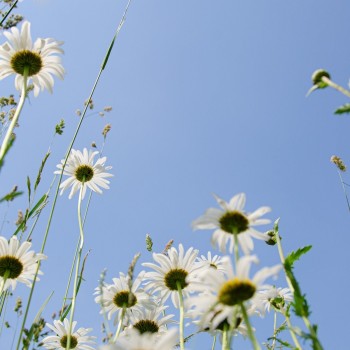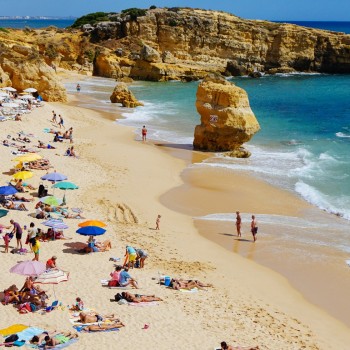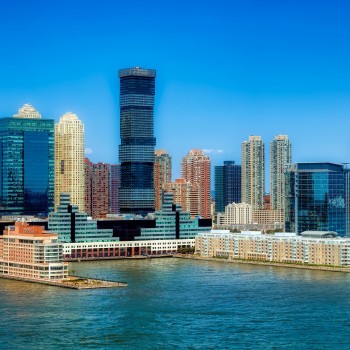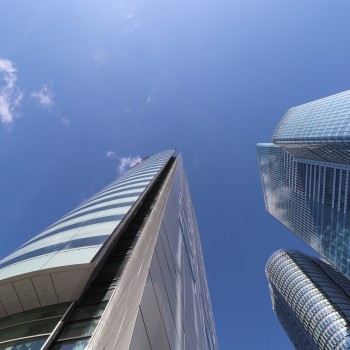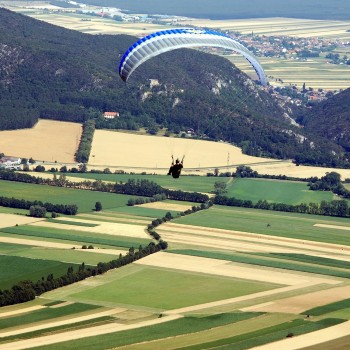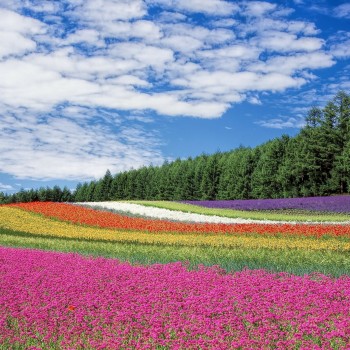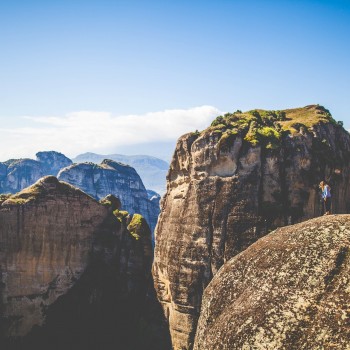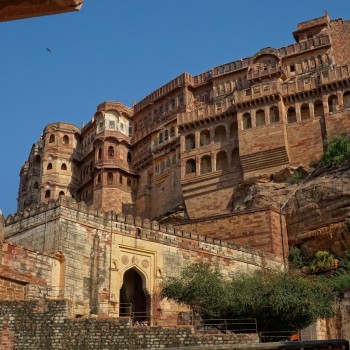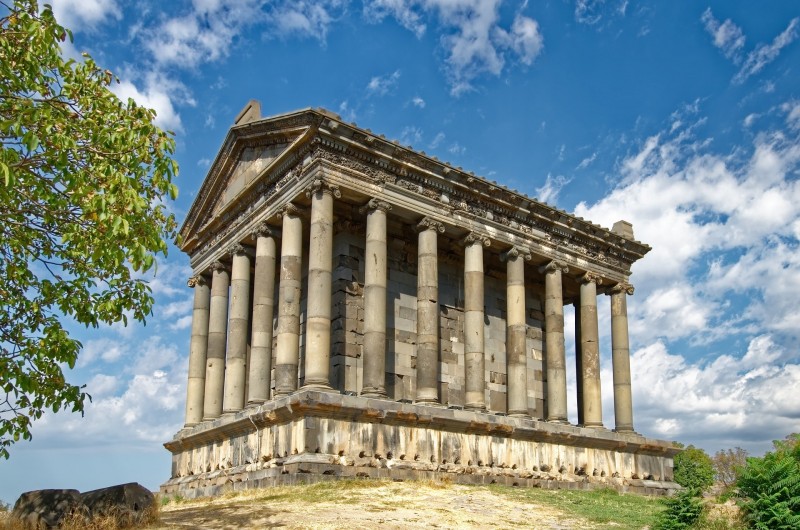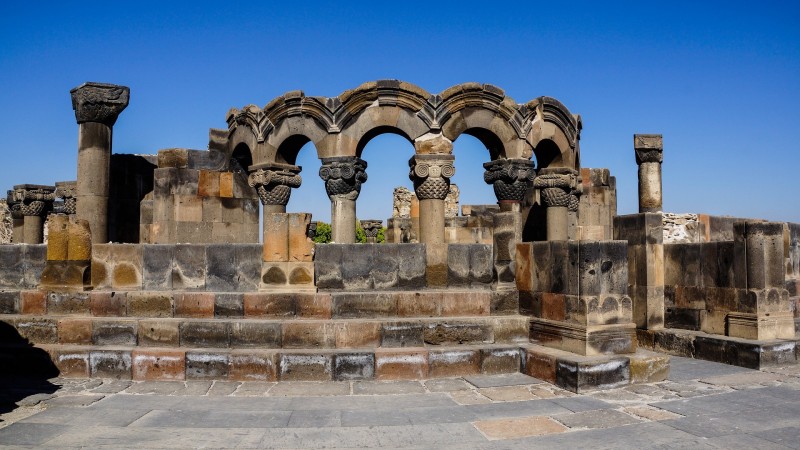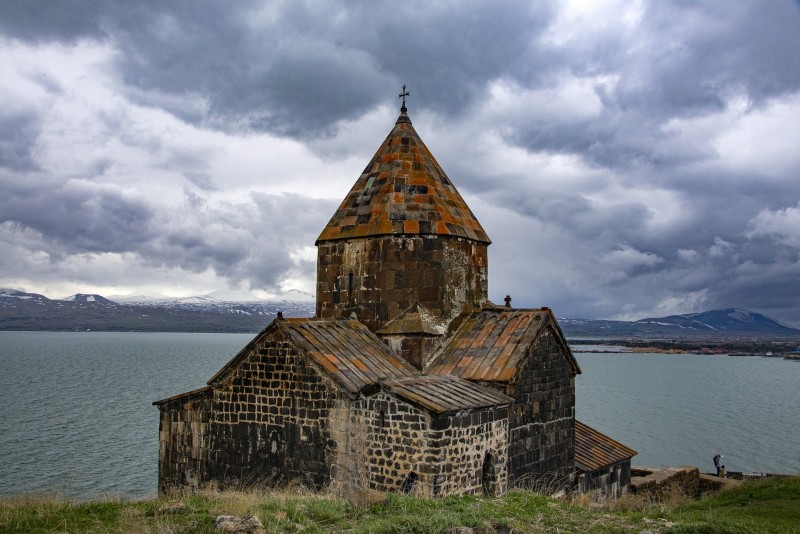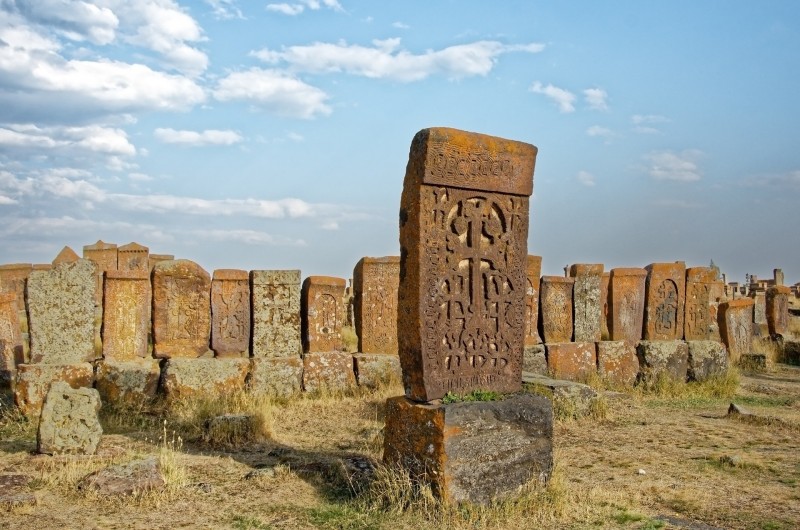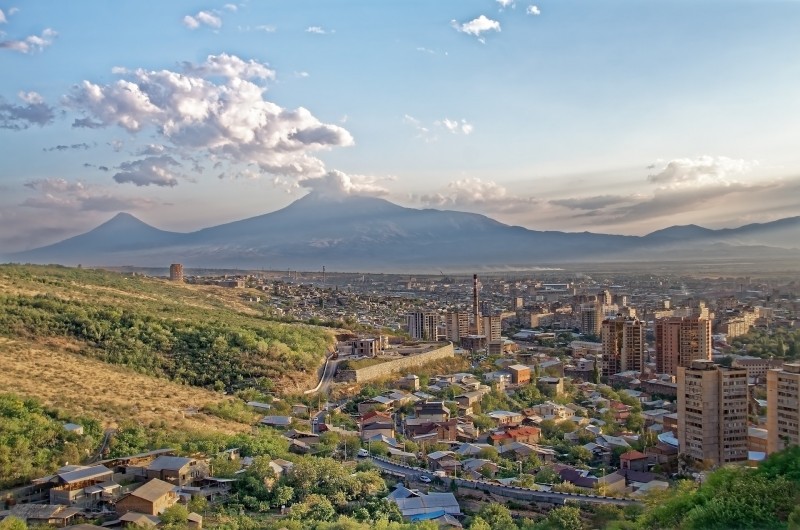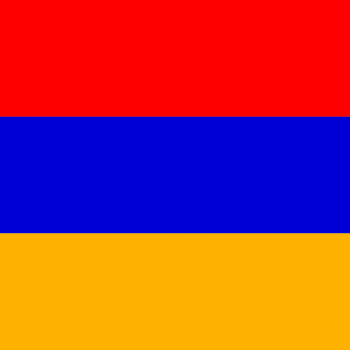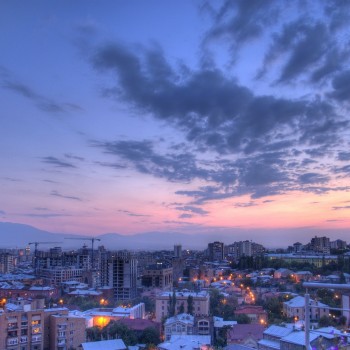Armenia
Capital city description
Yerevan, the capital city of Armenia, is the largest Armenian city and among the oldest continuously inhabited cities in the world. Yerevan, the country’s industrial, administrative, and cultural city, is located along River Hrazdan.
Yerevan has been Armenia’s capital city since the year 1918, making it the 13th capital in the country’s history and the 7th situated around or in the Ararat plain. Yerevan is the seat of one of the world’s oldest diocese, the Araratian Pontifical Diocese, the Armenian Apostolic Church’s largest diocese.
Climate
The climate of Armenia in other regions is markedly continental. Summer is dry and sunny, lasting from June to mid-September. Springs are short, while falls are long. Winters are pretty cold with plenty of snow and temperatures ranging between -10 and -5 degrees Celsius (14 and 23 degrees Fahrenheit).
Languages spoken
Armenia's official language is Armenian. Though, many people also speak Russian due to its proximity to the former Soviet Union. Russian is spoken as a second language in Armenia, but it also serves as the mother tongue of the Russian minority.
About 40% of the population of Armenia have basic knowledge of English. But only 3.6% of them use it as a second language.
Fun/Fascinating Facts
- Armenia is the first country to adopt Christianity as the state religion. Jesus Christ’s apostles Thaddeus and Bartholomew preached in Armenia, and the Armenian Apostolic Church is named after them. Armenia became the first Christian state.
- The VI century mathematician David the Invincible, an Armenian scientist, created the world’s first arithmetic textbook. A sample of this book is kept at Matenadaran – the Institute of Ancient Manuscripts named after St. Mesrop Mashtots. Matenadaran is one of the largest repositories of manuscripts in the world.
- Armenia is deemed to be the homeland of apricot. This is due to the history of the penetration of apricot from Asia to Europe.
- Mount Ararat is the symbol of Armenia. It is depicted on the emblem of the country. Ararat Mountain range consists of two extinct volcanoes: Great Ararat (in Armenian Masis, 5165 m) and Small Ararat (in Armenian Sis, 3927 m).
- In Armenia, Chess is part of the curriculum which explains why Armenians are so good at it.
Unique Customs/Traditions
- There are many traditions when it comes to an Armenian wedding. For instance, after many ceremonies, celebrations, gift-giving, etc., once the bride and groom reach their new house (or the groom's parents' house), it is customary to break a plate in front of the door before entering. This tradition is for good luck.
- Armenian families tend to stick very closely together. It is common for adults to be living with their parents. Often they won't move out until they are married. Even then, sometimes the married couple comes to live with the husband's parents. It is a tradition that they live with the husband's parents and not the wife's.
- An Armenian home is one of the most welcoming places. If one friend wants to visit another friend, they will call them so that the host has time to make sure they have coffee, fruits, candies, pastries, etc., and if they don't, go out and buy it before their friend comes over.
- The kiss on the cheek and a light hug is a typical way to greet friends in Armenia. You'd think they have not seen each other for months or years, but they might have had lunch together earlier that afternoon.
Popular universities
| Name | Description | |
|---|---|---|
| American University of Armenia | The American University of Armenia was Established in 1991; it is a non-profit private higher education institution located in the large city of Yerevan. The Ministry of Education and Science is officially accredited. American University of Armenia (AUA) offers courses and programs leading to officially recognized higher education degrees such as master's degrees in several areas of study. | |
| Yerevan State University | Yerevan State University was established in 1919; it is a non-profit public higher education institution located in the large city of Yerevan. Yerevan State University (YSU) offers courses and programs leading to officially recognized higher education degrees such as bachelor's degrees, master's degrees, and doctorate degrees in several areas of study. The institution has a campus in Ijevan. It was officially endorsed by the Ministry of Education and Science, Armenia. | |
| ARMENIAN STATE PEDAGOGICAL UNIVERSITY | Armenian State Pedagogical University is a non-profit public higher education institution located in the large city of Yerevan. Founded in 1922 and officially endorsed by the Ministry of Education and Science. Armenian State Pedagogical University (ASPU) offers courses and programs leading to officially recognized higher education degrees such as bachelor's and master's degrees in several areas of study. | |
| RUSSIAN-ARMENIAN(SLAVONIC) STATE UNIVERSITY | Armenian State Pedagogical University is a non-profit public higher education institution located in the large city of Yerevan. Founded in 1922 and officially endorsed by the Ministry of Education and Science. Armenian State Pedagogical University (ASPU) offers courses and programs leading to officially recognized higher education degrees such as bachelor's and master's degrees in several areas of study. | |
| YEREVAN STATE MEDICAL UNIVERSITY | Yerevan State Medical University is a non-profit public higher education institution located in the large city of Yerevan. Founded in 1920 and officially endorsed by the Ministry of Education and Science, Armenia. Yerevan State Medical University (YSMU) offers courses and programs leading to officially recognized higher education degrees such as pre-bachelor degrees (i.e., certificates, diplomas, and associate or foundation degrees), bachelor's degrees, master's degrees, and doctorate degrees in several areas of study. | |
| Yerevan Brusov State University of Languages and Social Sciences is a non-profit public higher education institution located in the large city of Yerevan. Established in 1935 and officially recognized by the Ministry of Education and Science, Armenia. Yerevan Brusov State University of Languages and Social Sciences (YSULS) offers courses and programs leading to officially recognized higher education degrees such as pre-bachelor degrees (i.e., certificates, diplomas, and associate or foundation degrees), bachelor degrees, master degrees, doctorate degrees in arts and social sciences. | ||
| Armenian State University of Economics | Armenian State University of Economics was founded in 1930; it is an anon-profit public higher education institution located in the large city of Yerevan. This institution also has other campuses at Gyumri andYeghegnadzor. It was officially endorsed by the Ministry of Education and Science, Armenia. Armenian State University of Economics (ASUE) offers courses and programs leading to officially recognized higher education degrees such as bachelor's degrees, master's degrees, doctorate social sciences. | |
| ARMENIAN NATIONAL AGRARIAN UNIVERSITY | Armenian National Agrarian University was founded in 1930; it is a non-profit public higher education institution located in the large city of Yerevan. Armenian National Agrarian University (ANAU) offers courses and programs leading to officially recognized higher education degrees such as pre-bachelor degrees (i.e., certificates, diplomas, and associate or foundation degrees), bachelor's degrees, master's degrees, and doctorate degrees in several areas of study. This institution has other campuses at Vanadzor, Sisian, and Shushi. It was officially recognized by the Ministry of Education and Science. | |
| NATIONAL POLYTECHNIC UNIVERSITY | The National Polytechnic University of Armenia was founded in 1933; it is a non-profit public higher education institution located in the large city of Yerevan. This institution has other campuses at Gyumri, Vanadzor, Goris, and Kapan. It was officially recognized by the Ministry of Education and Science, Armenia. National Polytechnic University of Armenia (NPUA) offers courses and programs leading to officially recognized higher education degrees such as pre-bachelor's degrees (i.e.certificates, diplomas, and associate or foundation degrees), bachelor's degrees, master's degrees, and doctorate degrees in several areas of study. | |
| FRENCH UNIVERSITY OF ARMENIA | French University in Armenia was founded in 1995; it is a private higher education institution located in the large city of Yerevan. It was officially accredited by the Ministry of Education and Science. Université Française en Arménie (UFAR) offers courses and programs leading to officially recognized higher education degrees such as master's degrees in several areas of study. | |
Festivals & Events

Vardavar
Date: July
Vardavar is an exceptional holiday for all Armenians. Vardavar is an Armenian word that means to pour water over someone. Everyone loves to play this funny game. It may seem strange for foreigners to see everyone pouring water on each other. So if you walk in the streets, you never have a hope that you will get out of it completely dry.
.jpg)
Snowman festival
Date: February
The Snowman & Snow Art Festival is a two-day event in Jermuk in the Vayots Dzor Province, the wintertime haven of Armenia. At the festival, you will have the opportunity to participate in a snow art competition, where you have a chance to unleash your creativity to build snowmen and other ice figures. Since the Jermuk is also the heart of winter activities in Armenia, visitors can participate in ice-climbing, skiing, snowboarding, hiking to the Jermuk waterfall, and riding on the Jermuk ropeway.

DOLMA FESTIVAL
Date: May
The Dolma Festival in Armenia is an annual festival, also known as Uduli, held near Armavir, Armenia. It started in 2011 and focuses on appreciating Armenian cuisine, especially Dolma, a traditional Armenian dish made of ground meat, lamb, and spices wrapped in vine leaves, cabbage leaves, and vegetables.
During the festival, cooks will take part in a competition for the unique recipe. Traditional music, singing, and dancing will set the mood for the celebration.

Color Festival
Date: June
Color Festival in Yerevan celebrates the arrival of the festive and joyous summer season with messy and color fun. This colorful festival is quite similar to the Indian holiday Holi, but at the same time has its distinct characteristics with regard to events. The festival's visitors should expect to be doused from head to toe in completely harmless brights powders while meeting friends and dancing to music played by local DJs. It is one of the most colorful events of June in Armenia, which will make your summer vacation truly unforgettable.

Yerevan Wine Days
Date: May
Yerevan Wine Days is an annual street festival gathering the true oenophiles on Saryan Street - a bustling hub of Yerevan’s young and innovative wine seen. Yerevan Wine Days attracts thousands of visitors worldwide. People from various nationalities, who enjoy drinking wine, gather on Saryan Street to feel the taste of Armenian wine. There is a big parade that is complemented by traditional Armenian songs and dances. Some restaurants and cafes are also present offering light snacks and meals.

Syunik Mulberry Festival
Date: September
One of the traditional festivals in Armenia is Mulberry Festival in summer. The festival is held in Karahunj, which is a small town in Syunik Province. The event takes place in July. Karahunj is the place where the first mulberry vodka was produced.
The villagers start to compete with each other at mulberry gatherings during the festival. At the same time, The guests can watch and enjoy the process of vodka preparation, the process of drying mulberries, and the preparation of doshab (a special syrup that Armenians prepare for fighting colds and coughs).

International Balloon Festival
Date: September
The International Balloon Festival brings a memorable atmosphere to Yerevan on September 15-18, where many colorful balloons from different countries adorn Yerevan’s sky, making it a picture-perfect place.
The festival, organized by Skyball, aims to develop tourism and its aviation and aeronautics.
Attractions / Top Sights
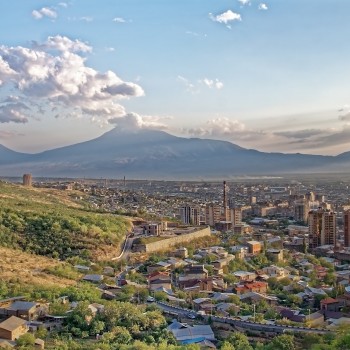
Yerevan
When to visit: In summer
When to visit: https://www.thecrazytourist.com/15-best-places-to-visit-in-armenia/
Yerevan, the capital of Armenia, is the largest city in Armenia and is an excellent place for anyone wishing to travel to Armenia. The city is home to the grand Republic Square while climbing the Cascade to see the city’s monument to Soviet victory in the Second World War is a must.
Much of what Armenia offers can be explored during day trips from Yerevan, known as the City of Cafes. The vernissage flea market is worth visiting too – it is open at the weekend – while a walk through the Hrazdan gorge is highly recommended. Yerevan is also home to Blue Mosque, the only mosque in the country, and Levon’s Amazing Underground World, one of Europe’s most unusual attractions.
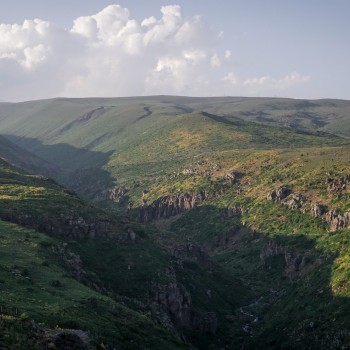
Shikahogh State Reserve
When to visit: In summer
When to visit: https://www.thecrazytourist.com/15-best-places-to-visit-in-armenia/
The second-largest forest reserve in Armenia, Shikahogh State Reserve, is so unspoiled that large parts remain unexplored today. The forest is home to animals including leopards, bears, wild goats, and vipers, and it is also thought that Shikahogh State Reserve has about 1,100 species of plants, although its fauna has not yet been fully explored. A planned highway threatened the reserve in 2005, but environments successfully lobbied for the forest’s future to be protected. The reserve also has several stunning waterfalls to enjoy.
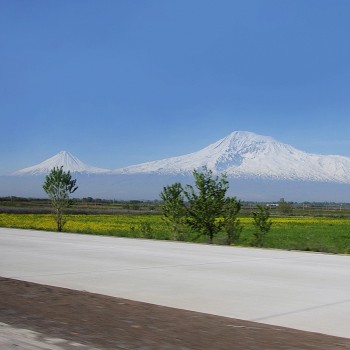
Mount Aragats
When to visit: July, August and September
When to visit: https://www.thecrazytourist.com/15-best-places-to-visit-in-armenia/
Mount Aragats is one of Armenia’s most astonishing natural sights, with the latent volcano located in the north of the country. It is Armenia’s highest peak, and there is a lot of rock art to be enjoyed around its base, with paintings of animals and human-like figures dating back hundreds of years. Snow covers the peak almost all year-round, but Mount Aragats can be climbed, with July, August, and September the best times of the year to attempt the hike. The southernmost of the four peaks is the easiest to climb, while the northern peak is the most challenging at around 4,000 meters.
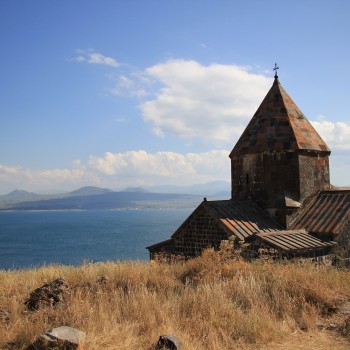
Lake Sevan
When to visit: July and August
When to visit: https://www.thecrazytourist.com/15-best-places-to-visit-in-armenia/
Lake Sevan, located in the heart of Armenia, is the country’s largest lake and a beautiful place to visit. Some remarkable monasteries surround the lake – the most impressive being arguably the Sevanavank Monastery – providing a glorious scenic backdrop to a relaxing trip.
Windsurfing is among the recreation activities available at the lake, which also has a wide choice of excellent seafood restaurants along its shore. Lake Sevan has several well-known beaches.
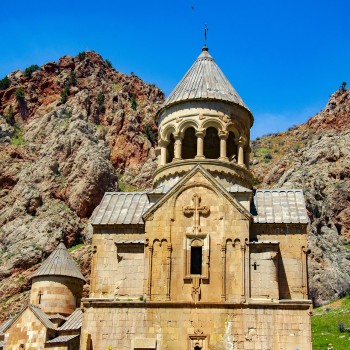
Noravank
When to visit: In summer
When to visit: https://www.thecrazytourist.com/15-best-places-to-visit-in-armenia/
Noravank is one of the most beautiful Monasteries in the whole country. Sheer brick-red cliffs shield the monastery, which was built in the 13th century. Noravank is famous for its Astvatsatsin (Holy Mother of God) church.
The story tells that God saved the monastery when Armenia was conquered by the Mongols hundreds of years ago. Thousands of people visit Novarank every year.
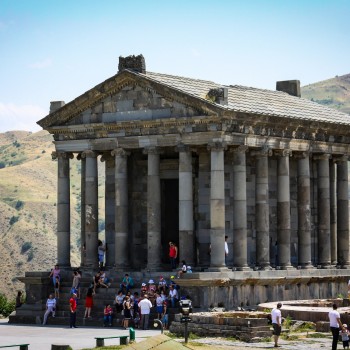
Garni Temple
When to visit: In summer
When to visit: https://www.worldhistory.org/Temple_of_Garni/
The Temple of Garni ("Garnu tacar") is located in the village of Garni in Kotayk Province, Armenia, and it was once a pagan temple dedicated to the Armenian sun god Mihr. Built-in the middle of the 1st century CE, the Temple of Garni notably survived the destruction of pagan temples following Armenia's conversion to Christianity in the 4th century CE and countless invasions and earthquakes until its collapse in 1679 CE. After continuous excavations in the late 19th and early 20th centuries CE, the Temple of Garni was reconstructed between 1969-1975 CE.
Today, it is the only free-standing Greco-Roman structure in Armenia. It is seen by many as a great symbol of Armenia's classical past and its deep historical ties to the civilizations of Greece and Rome.
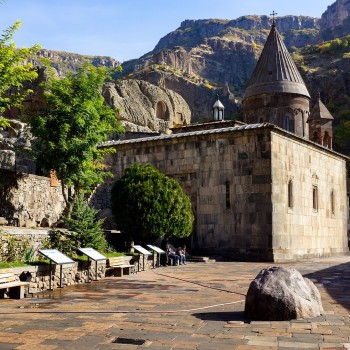
Monastery of Geghard
When to visit: Julu, August and September
When to visit: https://whc.unesco.org/en/list/960
The Monastery of Geghard and the Upper Azat Valley contains several churches and tombs cut into the living rock, illustrating Armenian medieval architecture at its highest point.
The complex of medieval buildings is set into a landscape of outstanding natural beauty at the entrance to the Azat Valley. High cliffs from the northern side surround the complex while the defensive wall encircles the rest.
The monuments included in the property are dated from the 4th to the 13th century. In the early period, the Monastery was called Ayrivank (Monastery in the Cave) because of its rock-cut construction. The Monastery was founded according to tradition by St. Gregory the Illuminator. It was built following the adoption of Christianity as a state religion in Armenia (beginning of the 4th century AD). The main architectural complex was completed in the 13th century AD. It consisted of the cathedral, the adjacent narthex, eastern and western rock-cut churches, the family tomb of Proshyan princes, Papak’s, and Ruzukan’s tomb-chapel, and various cells numerous rock-cut cross-stones (khachkars). The Kathoghikè (main church) is in the classic Armenian form, an equal-armed cross inscribed in a square plan and covered with a dome on a square base, linked with the base by vaulting. The east arm of the cross terminates in an apse, the remainder being square. In the corners are small barrel-vaulted two-story chapels. On the internal walls, there are many inscriptions recording donations. The masonry of the external walls is particularly finely finished and fitted. A gavit (entrance hall) links it with the first rock-cut church.

Tsaghkadzor
When to visit: https://www.thecrazytourist.com/15-best-places-to-visit-in-armenia/
Tsaghkadzor is situated 50 kilometers north of Yerevan on the south-eastern slope of the Teghenis Mountains in Kotayk Province.
Armenia’s mountainous scenery makes it ideal for winter sports, and the country’s best ski resort can be found at Tsaghkadzor in the heart of the country. Ski lifts are paid for by the ride and are among the most affordable in Europe. Tsaghkadzor boasts some of the finest hotels in the country. At the same time, the resort also has one of the nation’s most comprehensive entertainment centers in the form of the Senator Royale casino complex. Tsaghkadzor also has the Kecharis Monastery, one of Armenia’s most important religious complexes, dating back to the start of the 11th century.


